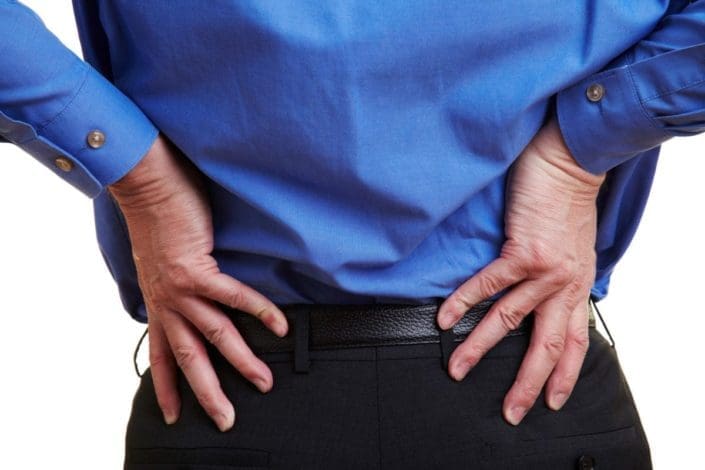
What is bursitis of the hip?
Bursitis is the painful swelling of bursae. Bursae are fluid-filled sacs that cushion your tendons, ligaments, and muscles. When they work normally, bursae help the tendons, ligaments, and muscles glide smoothly over bone. But when the bursae are swollen, the area around them becomes very tender and painful. Trochanteric bursitis is swelling affecting the bursae of the hip.
Bursitis does not only happen in the hip. It can also occur in the shoulder, knee, and elbow joints. Bursitis may be acute (short-lived) or chronic (long-lasting).
Symptoms of bursitis of the hip
Symptoms include joint pain and tenderness. You may also see swelling and feel warmth around the affected area. The pain is often sharp in the first few days. It may be dull and achy later. You may notice it more when getting out of a chair or bed. You may also notice it when sitting for a long time and when sleeping on the affected side.
Acute bursitis usually flares over hours or days. Chronic bursitis can last from a few days to several weeks. Chronic bursitis can go away and come back again. Acute bursitis can become chronic if it comes back or if a hip injury occurs.
Over time, the bursae may become thick, which can make swelling worse. This can lead to limited movement and weakened muscles (called atrophy) in the area.
What causes bursitis of the hip?
Several things can lead to hip bursitis, including the following:
- Repeated overuse or stress of the hip
- Rheumatoid arthritis
- Gout
- Pseudogout
- Injury of the hip
- Infection with bacteria, such as Staphylococcus aureus (or a staph infection)
- Diabetes
- Spine problems, such as scoliosis
- Uneven leg lengths
- Bone spurs (bony growths on top of normal bone) on the hip
How is bursitis of the hip diagnosed?
Your doctor will examine you and ask about your symptoms. Sometimes certain tests may be needed to rule out other conditions that can cause similar symptoms. These tests may include X-rays and magnetic resonance imaging (MRI).
Can bursitis of the hip be prevented or avoided?
You can avoid getting bursitis by not putting too much strain on your hips. Avoid activities that are especially difficult or painful. And take breaks to rest your hips. When you exercise, remember to warm up your muscles and then stretch to prevent injury. If you’re overweight, losing weight can help reduce pressure on your joints, including the hips.
Building strength in your hips with an approved workout routine can greatly reduce your chances of getting bursitis. Ask your doctor what types of exercise are best for you.
Bursitis of the hip treatment
Treatment for bursitis usually involves doing strengthening exercises and stretching. This helps prevent muscle atrophy—and can also be used to prevent bursitis, not just treat it. You should avoid activities that cause pain. Ask your doctor about exercises to help build strength in the area. Your bursitis may affect your ability to function normally. If so, you may need physical therapy to help you move again. This is especially true if you have chronic bursitis.
You can also use nonsteroidal anti-inflammatory drugs (NSAIDs) such as ibuprofen (brand names: Advil, Motrin) or naproxen (brand name: Aleve) to relieve pain and swelling. You also may want to use an ice pack on the area to reduce swelling.
If these treatments don’t help, you may need to have fluid taken out of the bursa. Or you may need steroid shots to reduce pain and swelling. Steroid shots are usually very effective in treating bursitis. You may need another shot after a few months.
Surgery is rarely needed to treat bursitis. It’s used only when all other treatments fail. For people who do need surgery, it’s a simple procedure. The doctor removes the bursa from the hip. The hip can function normally without the bursa. Usually, the surgery doesn’t require a long hospital stay. The recovery period is typically short.
Living with bursitis of the hip
If you have chronic bursitis, try to minimize flare-ups by stretching each day to increase range of motion. And avoid activities that you know will result in pain. Repetitive-motion activities are especially bad for bursitis. If you do have a flare up, remember that resting your hip is important. Without proper rest, healing is delayed.
Questions to ask your doctor
- What could have caused my symptoms?
- What is the best treatment option for me?
- How long before I can expect relief from my symptoms?
- Is it possible that my symptoms could return?
- Is it safe for me to exercise? What kind of exercise should I do?
![]()
Copyright © American Academy of Family Physicians
This information provides a general overview and may not apply to everyone. Talk to your family doctor to find out if this information applies to you and to get more information on this subject.








